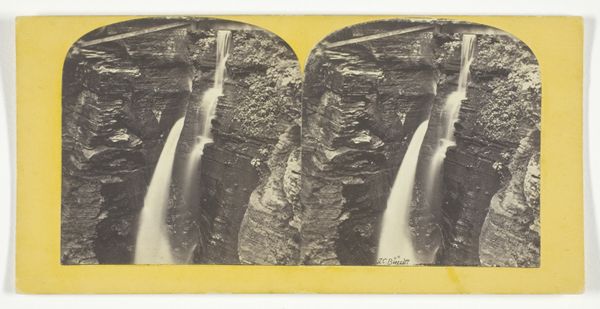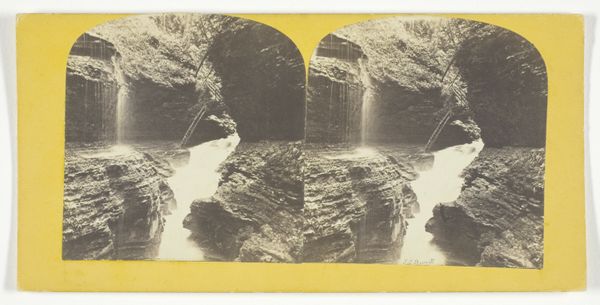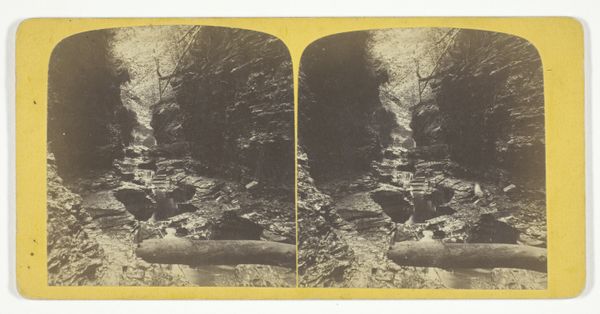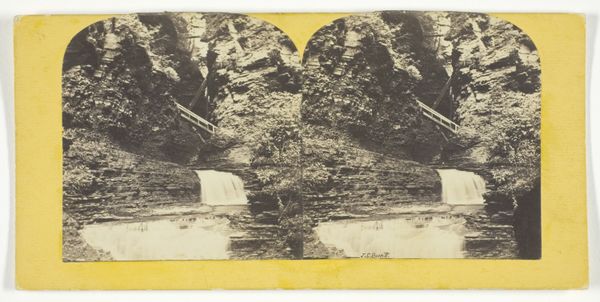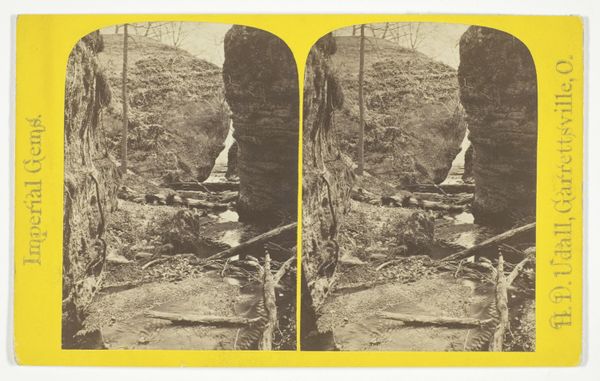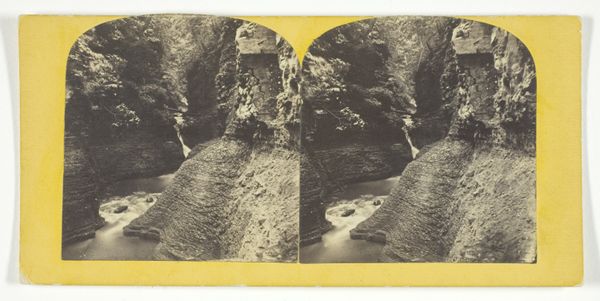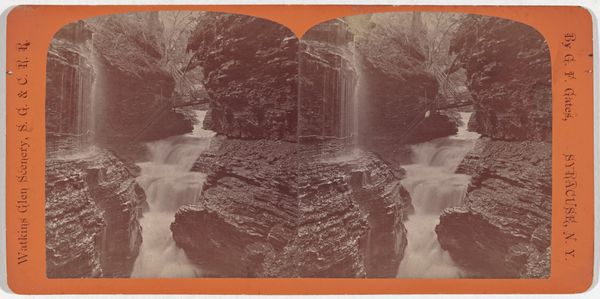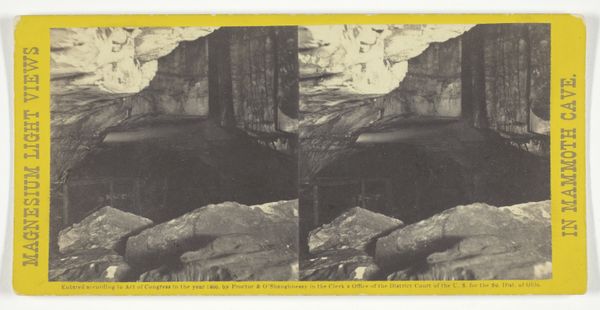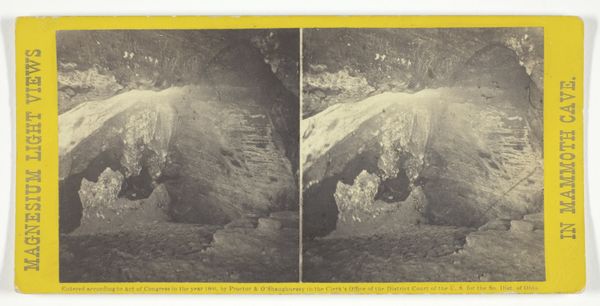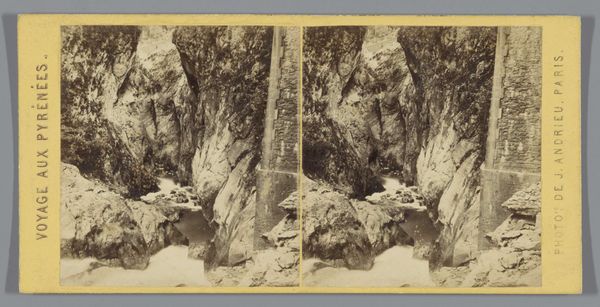
silver, print, photography
#
silver
# print
#
landscape
#
photography
Dimensions: 7.5 × 7.2 cm (each image); 8.4 × 17.1 cm (card)
Copyright: Public Domain
Editor: This is "Freef Glen at Watkins" by J.C. Burritt, dating from between 1860 and 1865. It's a stereograph, a silver print photograph, offering a sort of 3D view of this landscape. The cascading waterfall and the rock formations almost feel romantic, in a classical landscape painting kind of way. How would you interpret this work? Curator: It's interesting to consider the labour involved in producing a photograph like this in the 1860s. Think about the transport of the equipment, the preparation of the silver-based photographic plates in the field, the sheer physical effort. And then, why this subject? Not simply an untouched landscape, but one framed, even altered, with those timbers propped against the rocks, evidence of human intervention and industry even in what looks like wilderness. Editor: So you're saying the 'untouched' landscape is already a site of production and manipulation? Curator: Precisely! The romantic ideal of untouched nature obscures the real material interactions between people and the land. Those timbers aren’t just randomly placed; they indicate a conscious reshaping, potentially for resource extraction or tourism, activities of industry. The photograph itself becomes a commodity, reproducing this view for mass consumption. It raises questions about who benefits from this representation and the labor that supports it. Editor: It makes me wonder, was photography, even landscape photography, always tied to economic forces? Curator: Photography, like any medium, doesn't exist in a vacuum. The silver used in the print was mined, processed, and traded, connecting the artwork to a wider global economy. The very act of photographing the landscape transforms it into a product, part of a growing visual culture fueled by industrial capitalism. Editor: I never really thought about landscape photos in that light before! It shifts the focus away from the picturesque and onto the material reality behind its creation. Curator: Exactly! It is an approach to art which opens up opportunities to consider who owned land, and what impact their capitalistic visions had upon local culture and art.
Comments
No comments
Be the first to comment and join the conversation on the ultimate creative platform.

